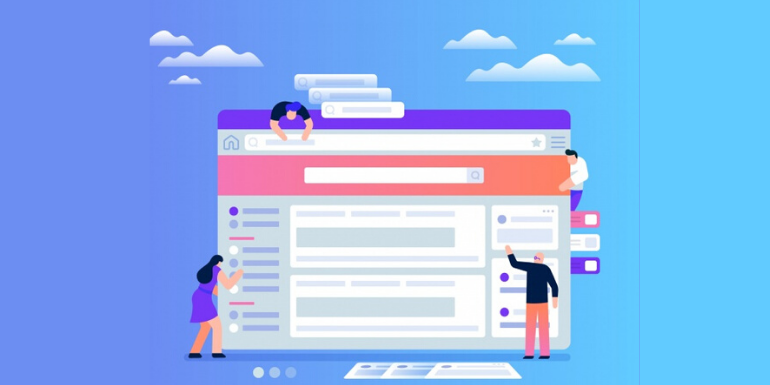Don’t you sometimes think that what’s the catch with a website design career and other IT jobs? That’s a valid concern, and the reality is that web designers have their own unique challenges to overcome, the same as those in any other profession.
Creating a website with all the things in mind is always more difficult than it seems. In order to attract visitors, spread information, or win the hearts of customers, a website’s interface must be both practical and aesthetically pleasing.
Transitioning from old programs into a fully digital environment presents problems for businesses but also shows new possibilities. So, businesses need to create available and powerful websites to satisfy the ever-increasing expectations of their smart and tech-savvy audience.
Challenges Website Designer Encounter Every day:
It is not a simple task to create a web application that is both user-friendly and powerful. The advancement of technology and digital innovation has required businesses to improve their website design career and development strategies.
You may have to wear many hats as a web designer, having expertise in design, development, UX, etc. Despite your confidence in your abilities, some of your customers may see themselves as more knowledgeable than you.
Web design is a demanding profession since it involves more than just making things seem nice online. These days, it’s all about pleasing the client and making them satisfied with your product. If you’re doing things right, your projects should come in on time and within budget.
For the best outcomes, you’ll need to overcome certain difficulties that happen with each project. Knowing them may improve your business.
1- Clients don’t give you objectives:
As a designer, you should make it a priority to ask about the client’s goals and objectives at the first meeting. Sadly, most clients will just provide you with general guidelines like “my website has to be eye-catching,” work on my page design,” “I need an impressive website,” and so on. These kinds of recommendations are not really useful.
In order to learn what your customer expects from you, you might use a short survey. To clarify this point, have the customer name five websites they find pleasing and explain why they find them so. You may learn from others’ experiences this way.
If you want to know what not to do while creating a bespoke web design UK, you can always ask your customers to show you some examples. Use the same procedure for other website pieces to save time in understanding what your customer wants and making other changes.
2- Picking the appropriate technology platform:
Selecting a technology stack that does not match the issues you are attempting to address is a horrible idea. If you’re building a small web app with a stable user base, you generally don’t need a technology stack that allows you to optimize for scalability.
Ask yourself whether your chosen technology stack is commonly used. You can find a large number of skilled developers to help with the first development and ongoing care if you choose an industry-standard technology.
It’s important to choose a technology pack with extensive online help materials. At some point in the process of development, you will almost certainly need to do some kind of troubleshooting. Having access to high-quality documentation and assistance may help you save time, money, and effort.
3- Speed and Efficiency:
Designing and completing a commercial website requires careful consideration and an experienced website design career to exclude the possibility of poor website loading times, which may have serious effects on the company. Inviting a customer to use your product is a one-and-done deal for most companies. If the app is too sluggish, users will just reject it.
In order to offer the type of speed and performance that companies desire for their early, consumers and to also provide the basis that they need for future company development, some future-proofing and planning are important when creating websites.
4- UX/UI and Design:
Web design agencies should make websites that meet the deeper needs of all their clients. The idea is to provide customers with enough enjoyment, and engagement, and they will make the product a regular part of their life, so helping the company reach its financial and other objectives. A meaningful user experience (UX) relies on an easy and user-friendly user interface (UI).
Designers of websites should confirm that their viewers can easily navigate the site, that is appealing, and that the typefaces used are clear.
5- Meeting Unreasonable Deadlines:
Putting together a website takes more time than you would think. It takes time to organize, plan, and talk with other people. Unfortunately, in a website design career, sometimes you have clients who give you deadlines that are too short.
Web designers may save their customers this type of anxiety by being up-front with them from the start about their project’s timeline, the amount of time they understand the need for each phase of design, and any potential roadblocks that may arise.
6- Understanding of Customer’s Budget:
One of the most challenging aspects of building websites for many clients is settling on a budget. Depending on their company rules and specifications, this may vary, and they may not be able to agree on a price most of the time.
Therefore, to minimize disagreements down the road, it’s important for both sides to make their expectations known upfront.
The Bottom Line
The key to being an expert in a website design career is strategic planning while keeping company goals in mind. Website designers should prioritize the needs of their target audience above all else and use a multidisciplinary technique.
